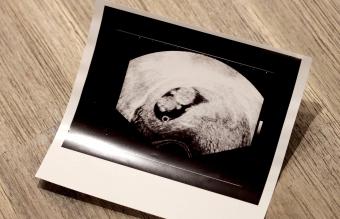
If you are pregnant, it is not unusual to experience cramping in the first trimester. While some aches and discomfort are considered normal, there are other symptoms that may indicate a possible miscarriage and you should contact your doctor immediately.
Is Cramping Normal in Early Pregnancy?
When you conceive, your uterus will naturally expand to accommodate the growing fetus. Along with the growth of the uterus, the ligaments and muscles that support it will stretch as well. This combination of events can bring on some mild, intermittent cramping. You may also feel more of a pressure or pulling sensation, or what you feel may even be comparable to menstrual cramps. These are all normal to experience in early pregnancy.
How to Get Relief From the Cramping
To help alleviate the cramping you can:
- Lie down or sit down. Changing positions may help.
- Take a warm bath.
- Try relaxation breathing techniques or meditation.
- Try an elastic belly band.
- Place a hot water bottle on the area that aches.
- Stay well-hydrated by drinking plenty of fluids.
What if There's Spotting With the Cramping?
An episode of light bleeding or spotting and cramping in early pregnancy doesn't always mean there is something wrong. If you experience first trimester cramping with some spotting, it could be the result of the embryo implanting into the lining of the uterus. This is an implantation bleed. This typically happens around the time you may be expecting your period and therefore can be mistaken for a period. However, an implantation bleed tends to be brown or pink in color and lasts only one to three days. It is recommended if you experience any type of bleeding early in your pregnancy, you should contact your doctor.
When to Call the Doctor About First Trimester Cramping
If you experience cramping accompanied by any of the following symptoms, you will need to call your doctor right away or a trip to the hospital may be necessary.
- Heavy bleeding
- Passing clots
- Severe cramping
- Sharp or stabbing pelvic pain
- Fever of 100.4 degrees and higher
- Severe headaches
- Dizziness or fainting
- Unusual vaginal discharge
Signs of Possible Miscarriage
When first trimester cramping is accompanied by bleeding (which can range from spotting to heavy bleeding) and pelvic pain, this may be signs of a possible miscarriage. You will need to see your doctor who will then most likely perform a pelvic exam, an ultrasound and possibly do blood tests. This will determine if you had or are having a miscarriage or if it's a threatened miscarriage. A threatened miscarriage is when you experience bleeding and cramping, however your cervix remains closed and the baby is fine but your doctor will continue to monitor the pregnancy to make sure it progresses as it should.
If you are experiencing a threatened miscarriage, the doctor may recommend bed rest until the bleeding and pain resolves. Bed rest is prescribed more on a precautionary basis and will not necessarily prevent a miscarriage.
Signs of Ectopic Pregnancy
An ectopic pregnancy is when a fertilized egg implants outside of the uterus. This can be life-threatening condition if not treated in a timely manner. Symptoms of an ectopic pregnancy include severe or sharp pelvic pain, bleeding and possible lightheadedness and fainting. If you are experiencing symptoms of an ectopic pregnancy, it is imperative that you contact your doctor immediately.
Be Cautious and Contact Your Doctor
If you experience cramping in the first trimester of pregnancy, be reassured that while it may be concerning, it can be a normal. However, you should always contact your doctor and make him aware of your symptoms. It is best to be safe and cautious when it comes to your health and the health of your baby.







